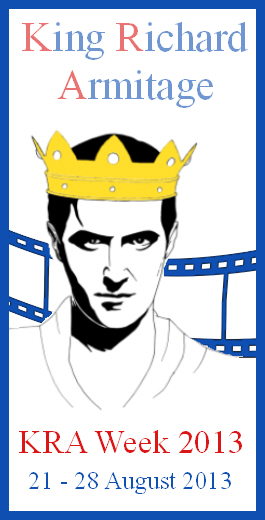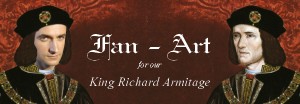Why Would King Richard Ride on a Badger? – Or Rather a Hog?
If you read our last post, you perhaps wondered, why in the “Horrible History” video about Shakespeare’s version of King Richard, he would choose a badger instead of a horse to ride away from the battlefield at Bosworth.
By chance, I found a reference, which perhaps is quite well known for all English readers here, but for me was totally new.
The text brings King Richard III in connection with quite a few animals:
Sir William Collingbourne (1435 – 1484) wrote the following verse:
The Rat, the Cat and Lovell the Dog,
Rule all England under the hog.
(Original note, pinned to the door of St. Pauls Cathedral on 18 July, 1484:
the Catte, the Ratte and Lovell our dogge
rulyth all Englande under a hogge.)
The poet got executed because of this ‘offensive’ couplet. Why, is not immediately understandable for us now, when the “Horrible History” episode could bring in a badger, without causing any offence, but perhaps just a slight rising of the eyebrow in astonishment.
The for people of King Richard’s time well understandable connection and irony becomes clear, when we exchange the animals with the dignitaries, Collingbourne intended with those names:
Rat = royal adviser Sir Richard Ratcliff
Cat = minister Sir William Catesby (Chancellor of the Exchequer during King Richard’s reign)
Dog = Viscount Lovel (His family’s heraldic symbol was the wolf)
Hog = King Richard III (King Richard III’s banner animal, the boar, is re-interpreted and made into a tame hog.
Collingbourne got his place in history for this small witticism, as the one who got executed for the least cause, as Tudor author Edward Hall puts it.
That Collingbourne indeed meant to offend King Richard III with his verses, becomes clear when one has a closer look at the hinted meaning in his witticism.
The boar, the chosen banner animal of King Richard, in Medieval times was an animal which was treated with greatest admiration, either for its strength, endurance, intelligence and fierce way as a fighter during hunts as well as its uncompromising care for its offsprings. It was greatly feared and hunters did not approach a boar on their own, but only dared to hunt a boar in larger groups and still it was deemed one of the most dangerous animals to hunt and brought the hunter who killed one greatest admiration.
To change that into a tame animal, which was by far not as highly valued for its attributes, though it was a useful creature, was a clear offense of its own, which mostly evades ouf perception of the case today, where most of us never came close to either a hog or a boar.
Collingbourne not only attacked the king, but also his three closest confidants, who all three profited greatly from their connection to Richard III during his reign, but who also loyally supported him and died for their king at or shortly after the Battle of Bosworth.
But closer research into the case reveals more than just a witticism.
Collingbourne had been part of a bigger conspiracy in favour of Henry Tudor, which was stopped and he, as leader of the conspiracy, consequently was executed in the year 1484. He had ‘published’ more than one witticism on the door of St. Pauls Cathedral and was famous for his short notes criticising the King and his confidants. He also stood in direct correspondence with Henry Tudor, encouraging him to land at Poole to forcibly take the crown from King Richard III, as indeed Henry Turdor later did at Bosworth.
(The badger, deriving from a mentioning in the “Black Adder” depiction of King Richard III, is perhaps comparable to a boar in size. At the time of King Richard III it would have been even more offensive than a hog, as it is a rather easy to hunt animal, though normally one would not want to do that at all, as the meat of badgers, except of very young ones or in early spring, is of no use, because the intensive odour of the fat makes it nearly unedible. That it also hides in holes in the earth would have increased the unsuitability of that animal to bring in connection with a king.)
Resources:
Wikipedia is an invaluable source and even solved the error, my printed source (therefore not named, as it is wrong in that case) held, by naming the culprit and author of the verses not Collingbourne, but Collingham.
Some articles of interest are:
Article is loosly refering to Grimm’s Encyclopedic collections (German invaluable sources of all symbolism and hidden meaning behind signs and images of any kind, though the brothers are better known for their fairy tales.)
Important notice to all signers of the petition:
We have currently accumulated over
60 unconfirmed signatures
of the petition (which are not included in our signatures count in the sidebar!).
We fear, this high number might be due to the delivery of the mail into your spam-folder, as the confirmation mails contain a return-link to co-ordinate the feedback.
To all unconfirmed signers, we will send out the confirmation mail again tomorrow (19th of January, 2012). Please check your e-mail and eventually your spam-folder.
Thank you !






Pingback: Richard Armitage / Richard III rumble, Week 15! « Me + Richard Armitage